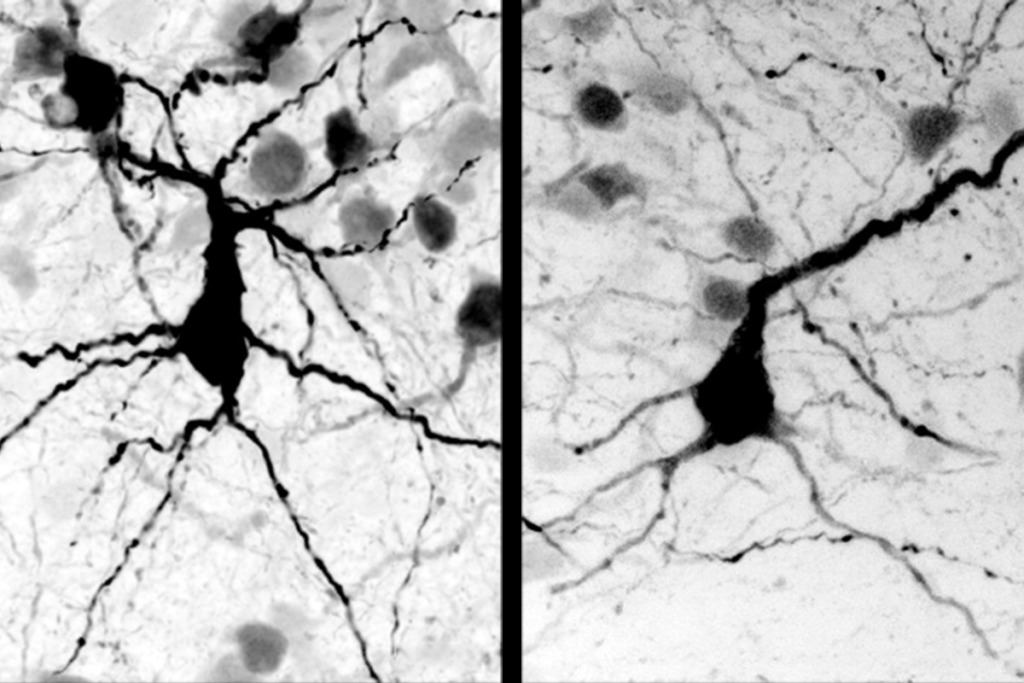Surplus of synapses may stunt motor skills in autism
An overabundance of neuronal connections in the brains of people with autism may contribute to the motor impairments associated with the disorder.
An overabundance of neuronal connections, called synapses, may contribute to the motor impairments associated with autism. The findings, reported 24 November in Nature Communications, add to mounting evidence that synapses are improperly pruned in people with the disorder1.
People are born with more synapses than they need. These spare connections are pared down during development, leaving only the most useful ones. But in autism, this excess is thought to persist.
“This is why autism is sometimes described as intense world syndrome,” says lead researcher Christian Hansel, professor of neurobiology at the University of Chicago. “Synaptic pruning is very important because it developmentally changes how the circuits in your brain are wired.”
Hansel and his team studied motor circuits in the cerebellums of mice with an extra copy of the chromosomal region 15q11-13 — thought to be the second most common genetic aberration seen in autism. The mice have motor coordination problems similar to those seen in about 80 percent of children with autism.
The researchers used a test called ‘eye-blink conditioning,’ in which mice learn to associate a shining light with an uncomfortable puff of air on their eye. Normal mice quickly learn to close their eyes when they see the light. The mutant mice take longer to learn this association and make more frequent mistakes.
The findings are similar to those seen in other mouse models of autism, including mice with mutations in CNTNAP2, SHANK3 and MeCP2, the researchers reported at conferences in 2012 and 2013.
Pruning problem:
In the new study, Hansel and his team homed in on the mechanism for this coordination collapse. They removed the cerebellums from the mutant mice and bathed thin slices in a solution to keep the neurons alive. They then stimulated the neurons that project to Purkinje cells, a subset of cells seen only in the cerebellum that are needed for motor learning. This elicited an enhanced electrical response in the Purkinje cells, suggesting an overabundance of synaptic connections.
The study is the latest to link symptoms of autism to defects in the cerebellum, a brain region long overlooked in research into the disorder. It also suggests that a relatively simple motor circuit underlies some autism behaviors, and that the eye-blink conditioning test can help assess synaptic abnormalities.
Ultimately, the findings may help researchers categorize individuals with autism based on their neural circuits and develop targeted treatments.
“If the eye-blinking deficit — which others have already reported in people with autism and fragile X [syndrome] — winds up being a generalizable marker of this abnormal circuitry, then that would be very powerful,” says Mustafa Sahin, associate professor of neurology at Harvard Medical School, who was not involved in the work.
The findings fit with those from a study published in August in Neuron, which showed that postmortem brains from children with autism have more synapses than do those from typically developing children2. The brains of children with autism also contain surplus levels of mTOR, a protein that fuels cell growth and inhibits synaptic pruning.
The results indicate that some motor deficits in people with autism could be due to synaptic changes in the cerebellum, says David Sulzer, professor of neurology, psychiatry and pharmacology at Columbia University. “It is possible that this is the tip of the iceberg for the cause of various [autism] symptoms through the central and even peripheral nervous system.” Sulzer was not involved in the new research but led the August study.
Hansel and his team plan to repeat the study in other mouse models of autism. They are also exploring whether UBE3A, an autism candidate gene located in the 15q11-13 chromosomal region, is involved in synaptic pruning.
“It won’t be as simple as saying there’s only one synaptic phenomenon that is affected here and if we fix that then everything is fine — autism is more complex than that,” Hansel says. “But if we can develop a treatment or a strategy that can relieve one of the many pressures going on, then that would be pretty good.”
References:
1. Piochon C. et al. Nature Communications 5, 5586 (2014) PubMed
2. Tang G. et al. Neuron 83, 1131-1143 (2014) PubMed
Recommended reading

New organoid atlas unveils four neurodevelopmental signatures
Explore more from The Transmitter

The Transmitter’s most-read neuroscience book excerpts of 2025

Neuroscience’s leaders, legacies and rising stars of 2025


